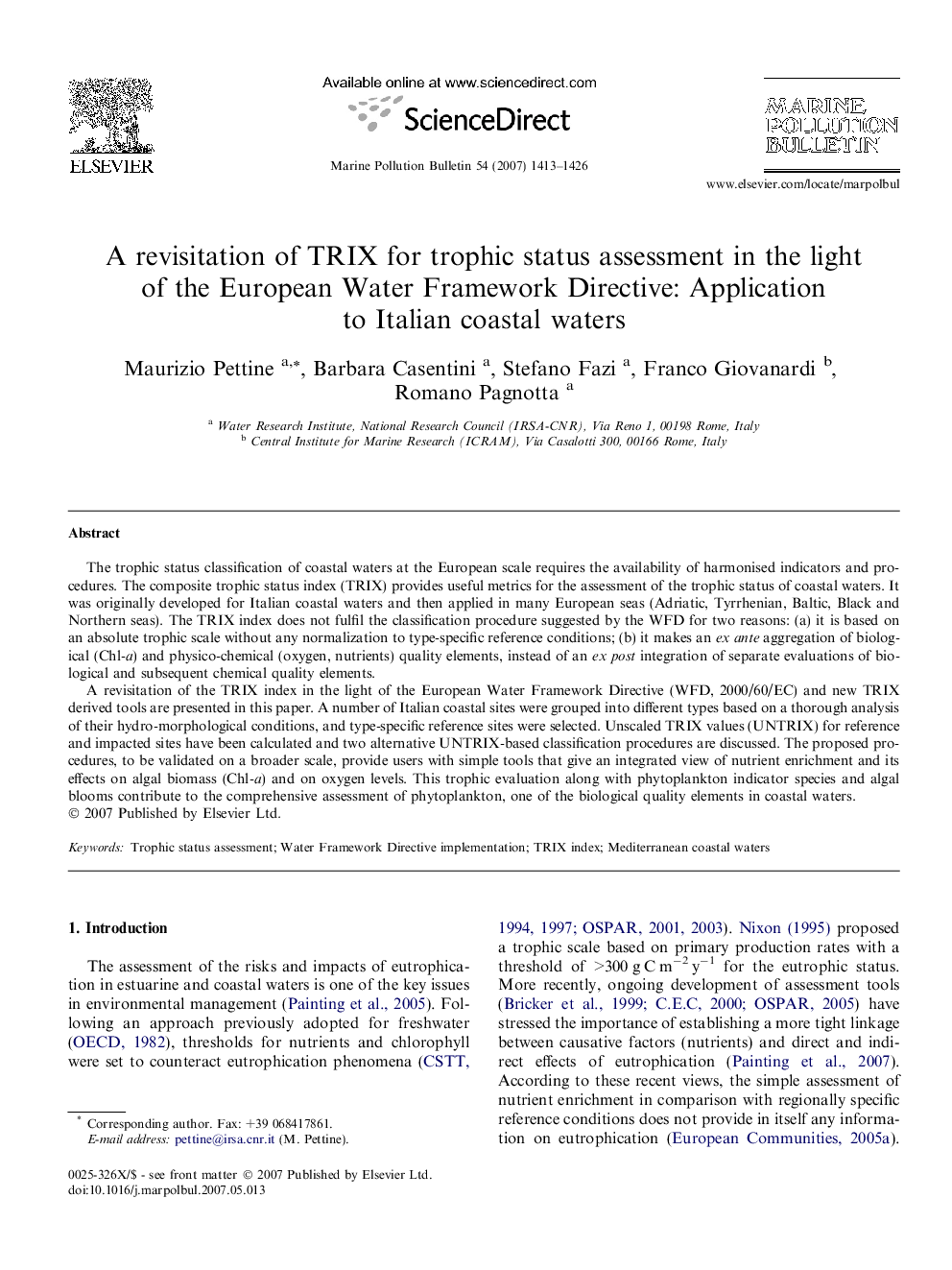| Article ID | Journal | Published Year | Pages | File Type |
|---|---|---|---|---|
| 4477524 | Marine Pollution Bulletin | 2007 | 14 Pages |
The trophic status classification of coastal waters at the European scale requires the availability of harmonised indicators and procedures. The composite trophic status index (TRIX) provides useful metrics for the assessment of the trophic status of coastal waters. It was originally developed for Italian coastal waters and then applied in many European seas (Adriatic, Tyrrhenian, Baltic, Black and Northern seas). The TRIX index does not fulfil the classification procedure suggested by the WFD for two reasons: (a) it is based on an absolute trophic scale without any normalization to type-specific reference conditions; (b) it makes an ex ante aggregation of biological (Chl-a) and physico-chemical (oxygen, nutrients) quality elements, instead of an ex post integration of separate evaluations of biological and subsequent chemical quality elements.A revisitation of the TRIX index in the light of the European Water Framework Directive (WFD, 2000/60/EC) and new TRIX derived tools are presented in this paper. A number of Italian coastal sites were grouped into different types based on a thorough analysis of their hydro-morphological conditions, and type-specific reference sites were selected. Unscaled TRIX values (UNTRIX) for reference and impacted sites have been calculated and two alternative UNTRIX-based classification procedures are discussed. The proposed procedures, to be validated on a broader scale, provide users with simple tools that give an integrated view of nutrient enrichment and its effects on algal biomass (Chl-a) and on oxygen levels. This trophic evaluation along with phytoplankton indicator species and algal blooms contribute to the comprehensive assessment of phytoplankton, one of the biological quality elements in coastal waters.
